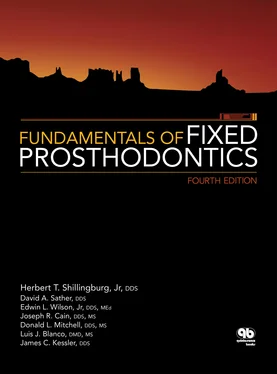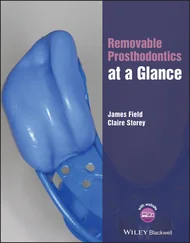22. Miller CS, Egan RM, Falace DA, Rayens MK, Moore CR. Prevalence of infective endocarditis in patients with systemic lupus erythematosis. J Am Dent Assoc 1999;130:387–392.
23. Lessard E, Glick M, Ahmed S, Saric M. The patient with a heart murmur: Evaluation, assessment and dental considerations. J Am Dent Assoc 2005;136:347–356.
24. American Dental Association, American Academy of Orthopedic Surgeons. Antibiotic prophylaxis for dental patients with total joint replacements. J Am Dent Assoc 2003;134:895–899.
25. Glick M. Diabetes: It is all about the numbers [editorial]. J Am Dent Assoc 2006;137:12,14.
26. Shlossman M, Knowler WC, Pettitt DJ, Genco RJ. Type 2 diabetes mellitus and periodontal disease. J Am Dent Assoc 1990;121:532–536.
27. Vernillo AT. Dental considerations for the treatment of patients with diabetes mellitus. J Am Dent Assoc 2003;134(special issue): 24S–33S.
28. American Diabetes Association. Standards of medical care in diabetes—2007. Diabetes Care 2007;30(suppl 1):S4–S41.
29. Nathan DM, Kuenen J, Borg R, et al. Translating the A1C assay into estimated average glucose values. Diabetes Care 2008; 31:1473–1478 [erratum 2009;32:207].
30. Kahn R, Fonseca V. Translating the A1C assay. Diabetes Care 2008;31:1704–1707.
31. Frank RM, Herdly J, Philipe E. Acquired dental defects and salivary gland lesions after irradiation for carcinoma. J Am Dent Assoc 1965;70:868–883.
32. Bertram U. Xerostomia. Clinical aspects, pathology and pathogenesis. Acta Odontol Scand 1967;25(suppl 49):1–126.
33. Daniels T, Silverman S, Michalski JP, Greenspan JS, Sylvester RA, Talal N. The oral component of Sjögren’s syndrome. Oral Surg Oral Med Oral Pathol 1975;39:875–885.
34. Al-Hashimi I. The management of Sjögren’s syndrome in dental practice. J Am Dent Assoc 2001;132:1409–1417.
35. Sreebny LM, Schwartz SS. A reference guide to drugs and dry mouths. Gerodontology 1986;5:75–99.
36. Guttenberg SA. Bisphosphonates and bone . . . What have we learned? [editorial] Oral Surg Oral Med Oral Pathol Oral Radiol Endod 2008;106:769–772.
37. Ruggiero SL, Fantasia J, Carlson E. Bisphosphonate-related osteonecrosis of the jaw: Background and guidelines for diagnosis, staging and management. Oral Surg Oral Med Oral Pathol Oral Radiol Endod 2006;102:433–441.
38. Hess LM, Jeter JM, Benham-Hutchins M, Alberts DS. Factors associated with osteonecrosis of the jaw among bisphosphonate users. Am J Med 2008;121:475–483.
39. Marx RE, Sawatari Y, Fortin M, Broumand V. Bisphosphonateinduced exposed bone (osteonecrosis/osteopetrosis) of the jaws: Risk factors, recognition, prevention, and treatment. J Oral Maxillofac Surg 2005;63:1567–1575.
40. Sedghizadeh PP, Stanley K, Caligiuri M, Hofkes S, Lowry B, Shuler CF. Oral bisphosphonate use and the prevalence of osteonecrosis of the jaw: An institutional inquiry. J Am Dent Assoc 2009;140:61–66.
41. Scully C, Madrid C, Bagan J. Dental endosseous implants in patients on bisphosphonate therapy. Implant Dent 2006;15:212– 218.
42. Wright EF. Referred craniofacial pain patterns in patients with temporomandibular disorder. J Am Dent Assoc 2000;131:1307– 1315 [erratum 2000;131:1553].
43. Tallents RH, Hatala M, Katzberg RW, Westesson PL. Temporomandibular joint sounds in asymptomatic volunteers. J Prosthet Dent 1993;69:298–304.
44. US Department of Labor, US Department of Health and Human Services. Joint Advisory Notice: Protection Against Occupational Exposure to Hepatitis B Virus (HBV) and Human Immunodeficiency Virus (HIV). Washington, DC: US Department of Labor, US Department of Health and Human Services, 1987.
45. Recommendations for prevention and control of hepatitis C virus (HCV) infection and HCV-related chronic diseases. Centers for Disease Control and Prevention. MMWR Recomm Rep 1998;47(RR-19):1–39.
46. Centers for Disease Control and Prevention. Viral Hepatitis. http://www.cdc.gov/hepatitis/. Accessed 10 Apr 2009.
47. Mast EE, Weinbaum CM, Fiore AE, et al. A comprehensive immunization strategy to eliminate transmission of hepatitis B virus infection in the United States: Recommendation of the Advisory Committee on Immunization Practices (ACIP). Part II: Immunization of adults. MMWR Recomm Rep 2006;55(RR-16):1–33 [erratum MMWR Morb Mortal Wkly Rep 2007;56:1114].
48. Centers for Disease Control. Hepatitis B virus vaccine safety: Report of an inter-agency group. MMWR 1982;31:465–467.
49. Centers for Disease Control. The safety of hepatitis B virus vaccine. MMWR 1983;32:134–136.
50. Infection control recommendations for the dental office and the dental laboratory. Council on Dental Materials, Instruments and Equipment. Council on Dental Practice. Council on Dental Therapeutics. J Am Dent Assoc 1988;116:241–248 [erratum 1988;116:614].
51. National Board for Certification of Dental Laboratories. Infection Control Requirements for Certified Dental Laboratories. Alexandria, VA: National Association of Dental Laboratories, 1986.
Table 1-1 Correlation between HbA1c and mean plasma glucose29
| HbA 1c |
6 |
7 |
8 |
| Mean plasma glucose (mg/dL) |
126 |
154 |
183 |
2 Fundamentals of Occlusion
Unfortunately, the occlusion is frequently overlooked or taken for granted in providing restorative dental treatment to patients. This may be due in part to the fact that the symptoms of occlusal disorders are often hidden from the practitioner untrained to recognize them or to appreciate their significance. Long-term successful restoration with cast metal or ceramic restorations is dependent on the maintenance of occlusal harmony.
While it is not possible to present the philosophies and techniques required to render extensive occlusal reconstruction in this limited space, it is essential that the reader develop an appreciation for the importance of occlusion. The perfection of skills required to provide sophisticated treatment of complex occlusal problems may take years to acquire. However, the minimum expectation of the competent practitioner is the ability to diagnose and treat simple occlusal disharmonies and to produce restorations that will not create iatrogenic occlusal or temporomandibular disorders.
In restorative treatment, the goal is to create occlusal contacts in posterior teeth that stabilize the mandibular position instead of creating deflective contacts that may destabilize it. In restorative treatment, the occlusion should be in harmony with the optimum condylar position, centric relation, which is an anteriorly, superiorly braced position along the articular eminence of the glenoid fossa, with the articular disc interposed between the condyle and eminence. 1This position is the most orthopedically stable position, and because it is a result of activated elevator muscles, it is also the most musculoskeletally stable position. 2
This position of the condyles in the glenoid fossae has been discussed and debated for years. It is used in dentistry as a repeatable reference position for mounting casts in an articulator. 3,4The term attempts to define the optimum relative position between all of the anatomical components. Ideally, that condylar position is also coincident with maximal intercuspation of the teeth. 4,5
For the concept of centric relation to be meaningful, the basic anatomy of the temporomandibular joint (TMJ) must be understood ( Fig 2-1). The bone of the glenoid fossa is thin at its most superior aspect and is not suited to be a stress-bearing area. However, the slope of the eminence in the anterior aspect of the fossa is composed of thick cortical bone that is capable of bearing stress.
Читать дальше












